The Siebert Banner
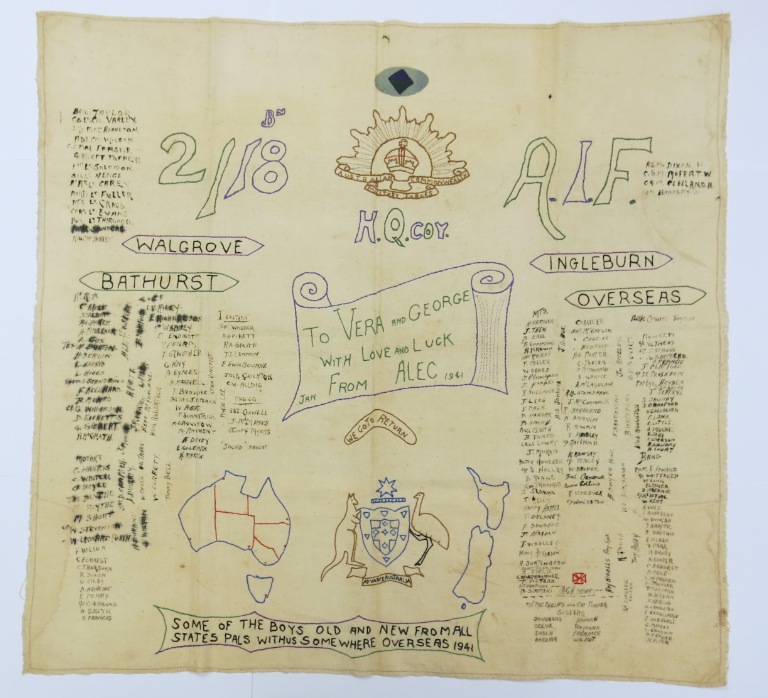
In 2018 the Memorial received the George Siebert collection of items relating to the 2/18th Australian Infantry Battalion. Private George ‘Alec’ Siebert was one of 22,000 Australians who became prisoners of war of the Japanese in the Second World War. He was interned in Changi for three and a half years, finally repatriated to Australia on 15 September 1945. He was discharged from the Second AIF on 25 October 1946.
In January 1941, while the 2/18th Battalion were in Bathurst awaiting their departure for Singapore, Siebert collected the names of those serving in the battalion and the Australian General Hospital staff. He handwrote 235 names on a large linen banner that was embroidered with the Rising Sun, the 1908 Australian Coat of Arms, a boomerang, and a map of Australia and New Zealand. He sent it to his wife Vera and young son George.
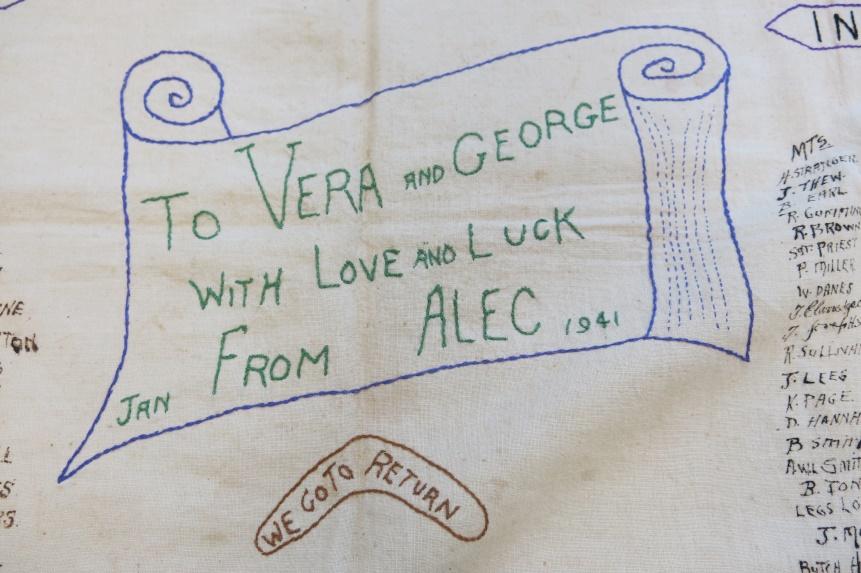
On 4 February 1941, the 2/18th Battalion departed Australia aboard the RMS Queen Mary. They served in Malaya, and in January and February 1942 fought the Japanese as they advanced towards Singapore. On 15 February 1942, the Allied commander, Lieutenant General Arthur Percival, surrendered Singapore to the Japanese. The 2/18th was ordered not to attempt escape (though some did) and the majority of the battalion was captured and interned for the rest of the war.
Members of the 2/18th Battalion arriving by train at a ferry wharf in February 1941.
Members of the 2/18th Battalion ex-prisoners of the Japanese at Changi, Singapore, in September 1945.
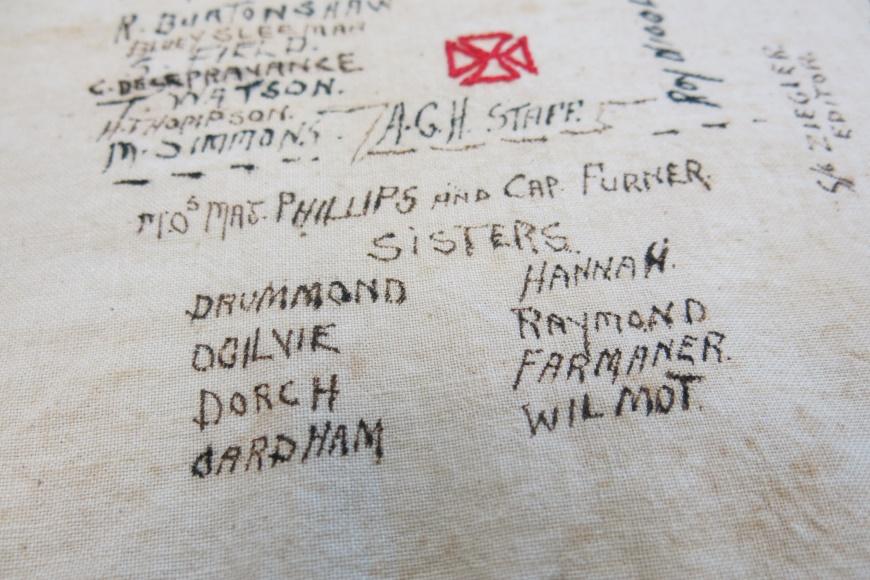
Siebert’s banner is a time capsule into the movements and fate of these young men and several Army nurses. Of those named, 206 have been fully or partially identified. Of those identified, some interesting individuals have been discovered. The names are recorded of eight nurses who were on board SS Vyner Brooke on 14 February 1942 when it sank. Sister Hulda Dorsch was lost at sea during the sinking. Sisters Irene Drummond, Peggy Farmaner, Elaine Balfour-Ogilvy and Bessie Wilmott were executed on Banka Island by the Japanese on 16 January. Wilhemina Raymont and Dora Gardam survived the sinking but were taken prisoner; both died of illness in captivity on Sumatra, on 8 February and 4 April 1945 respectively. Sister Ellen Hannah survived the sinking and captivity, and returned home after the war.
20 January 1942, Singapore. Sisters of the Australian Army Nursing Service, 2/4 Casualty Clearing Station, 8 Division. Back row (L-R) Hulda “Millie” Dorsch, Bessie Wilmott, Wilhemina Raymont, Elaine Balfour-Ogilvy, Peggy Farmaner. Front row (L-R) Dora Gardam, Irene Drummond and Ellen Hannah.
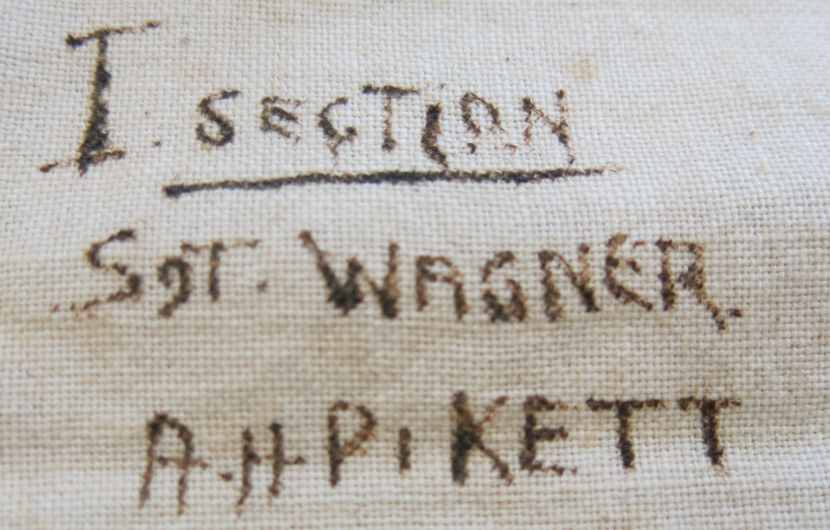
The first name in the “I Section” column is Sgt Wagner. The only Sergeant Wagner serving in the 2/18th Battalion in January 1941 was Charles Wagner, who later became a lieutenant. He was awarded the Distinguished Conduct Medal for his actions at Nithsdale Estate, Malaya on 27 January 1942. He was captured and interned in Changi before being sent to Borneo as part of ‘E’ Force.
Wagner was one of the ‘Berhala Eight’ who escaped on 4 June 1943 from Berhala Island, Sandakan; he was with Jock McLaren, Raymond Steele, Rex Blow, Leslie Gillon, Rex Butler and James Kennedy. They made their way to the Philippines and joined the Filipino guerrilla army. Wagner was part of a guerrilla action which ambushed a Japanese submarine chaser leaving a wharf on Bongao Island. He was killed by a Japanese sniper at Liangan on 21 December 1943.
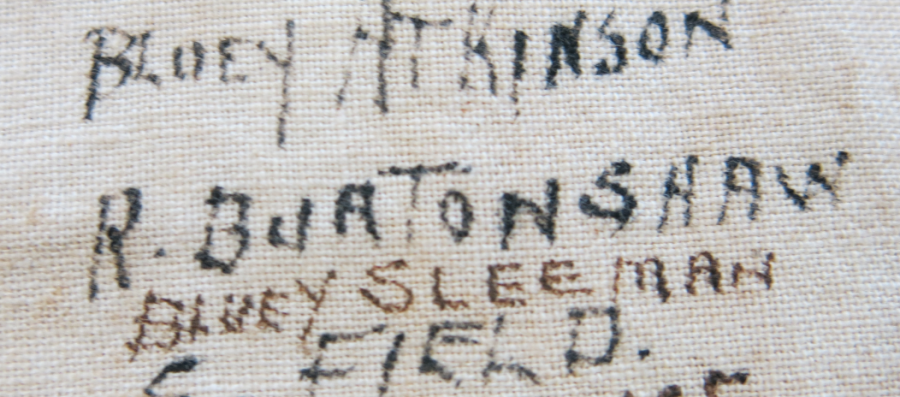
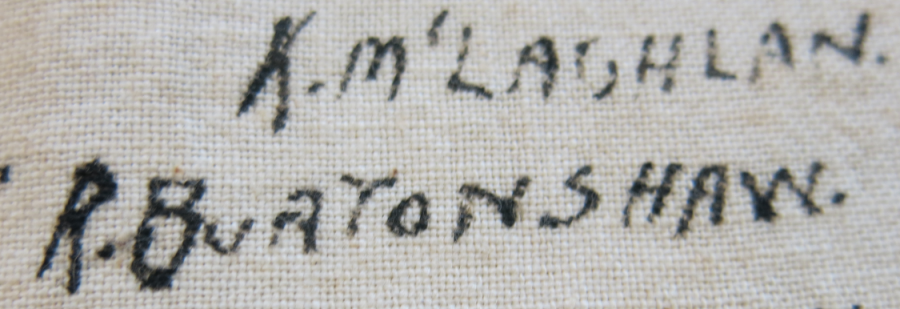
The name “Burtonshaw”, a fairly uncommon surname, appears twice on the banner. It comes as no surprise they were brothers. The older, Robert Burtenshaw, was killed on 19 February 1942 on Singapore. His younger brother, Ronald Burtenshaw, was killed when the Japanese ship Rakuyo Maru, transporting 1,300 Australian and British prisoners of war, was torpedoed on 12 September 1944 in the South China Sea by the US submarine USS Sealion.
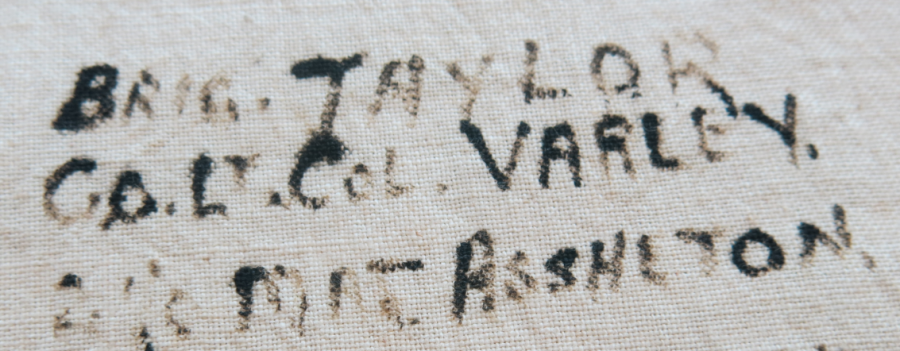
Another name on the banner is the Commander of 22 Infantry Brigade, Brigadier Arthur Varley, who was also killed in the sinking of the Rakuyo Maru. Varley had served in the First World War with 45 Battalion and received a Military Cross for his actions at Owl Trench in 1916. He received a Bar to his Military Cross for his actions near Hamel in 1917. Varley commanded the attack on Nithsdale Estate. A third name on the banner, Christopher Garland was also killed on the Rakuyo Maru.
Murray Griffin, “Brigadier Arthur Leslie Varley” (1942, pencil on paper, 50 x 36.8 cm).
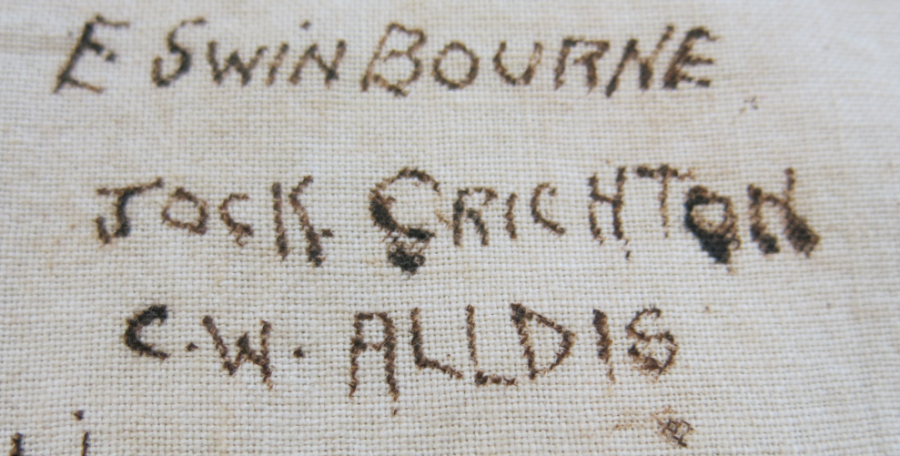
A survivor of captivity, Colin Alldis, received the British Empire Medal in 1946 for “valuable service and devotion as a POW in Kranji Camp”. Alldis alone maintained and operated a secret wireless set from May 1944 until August 1945. He used it to supply his fellow prisoners with news bulletins, which helped to improve morale at great risk to his own life.
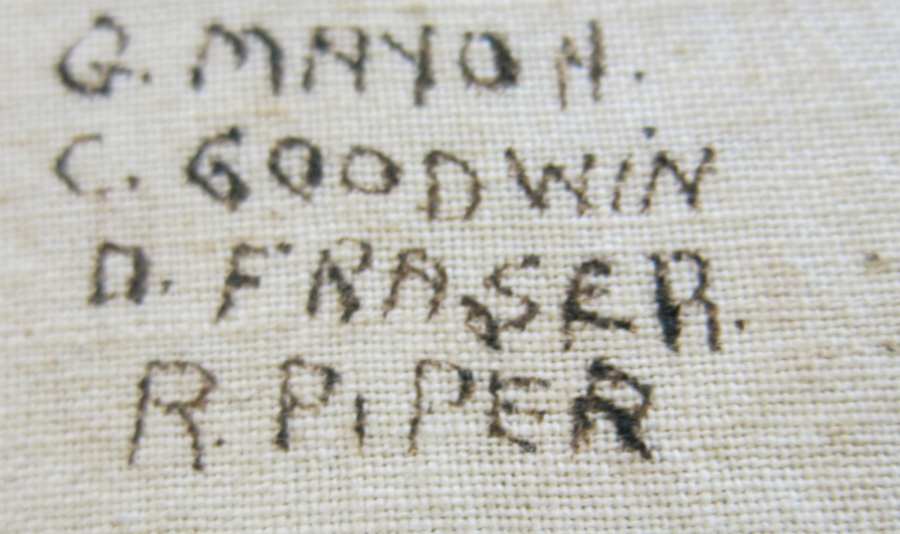
c. 1941, Australia. Studio portrait of Private Douglas Marks Fraser, 2/18 Battalion.
Another survivor was Douglas Fraser, the 2/18 Battalion Band’s Drum Major and Conductor. He worked as a potter during his internment where he produced small toddy pots to hold coconut oil or water for his fellow internees. He was depicted in a pen and ink wash drawing by Murray Griffin, titled “The camp potter, Changi”. Fraser was skilled enough that officers removed him from work parties to remain in Changi, making pots.
Murray Griffin, “The camp potter, Changi” (1945, pen, ink and wash over pencil on paper, 44.9 x 30.6).
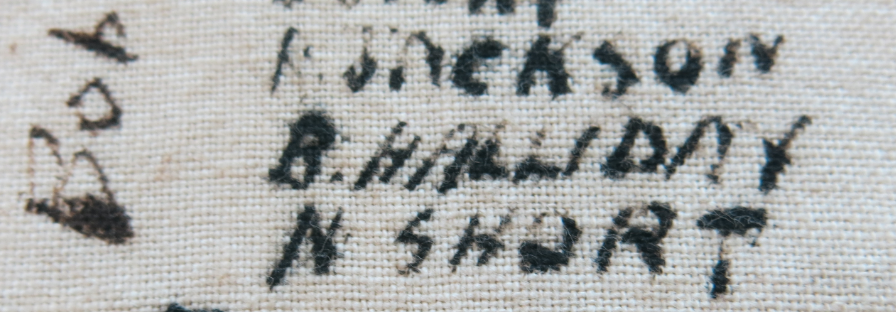
A notable name, “N.Short”, is Nelson Short. He was one of only six survivors of the Sandakan Death Marches, during which over 1,100 prisoners were force-marched from Sandakan to Ranau in North Borneo, starting on 28 January 1945. Short escaped from Ranau with the assistance of locals in July 1945; with him were Keith Botterill, William Sticpewich and William Moxham. They spent time on the 2/9 General Hospital Ship and Morotai to recuperate before being sent to Australia in October 1945. Botterill and Short returned to Borneo in 1985 to visit the Kundasang War Memorial.
Three of six Australians who survived the infamous death march from Sandakan to Ranau. Left to right: Private Nelson Short, Warrant Officer William Sticpewich and Private Keith Botterill.
George Siebert recorded the names of 235 people who served during the Second World War. Almost 151 names recorded on the banner refer to men captured by the Japanese. Of the 206 names that have been identified, almost 38% did not survive the war – 28 died as a result of military operations; 50 died as a result of captivity or were executed by the Japanese.
Of the remaining 128 names identified, 98 were captured but survived the war. They were interned in Changi, sent as labour forces on the Thai–Burma Railway, or to Japan, Korea and Borneo.
The banner is a fascinating relic of the history of one unit during the Second World War. There are many stories held in the fabric; only a few have been told here, and there are many more to be discovered.






